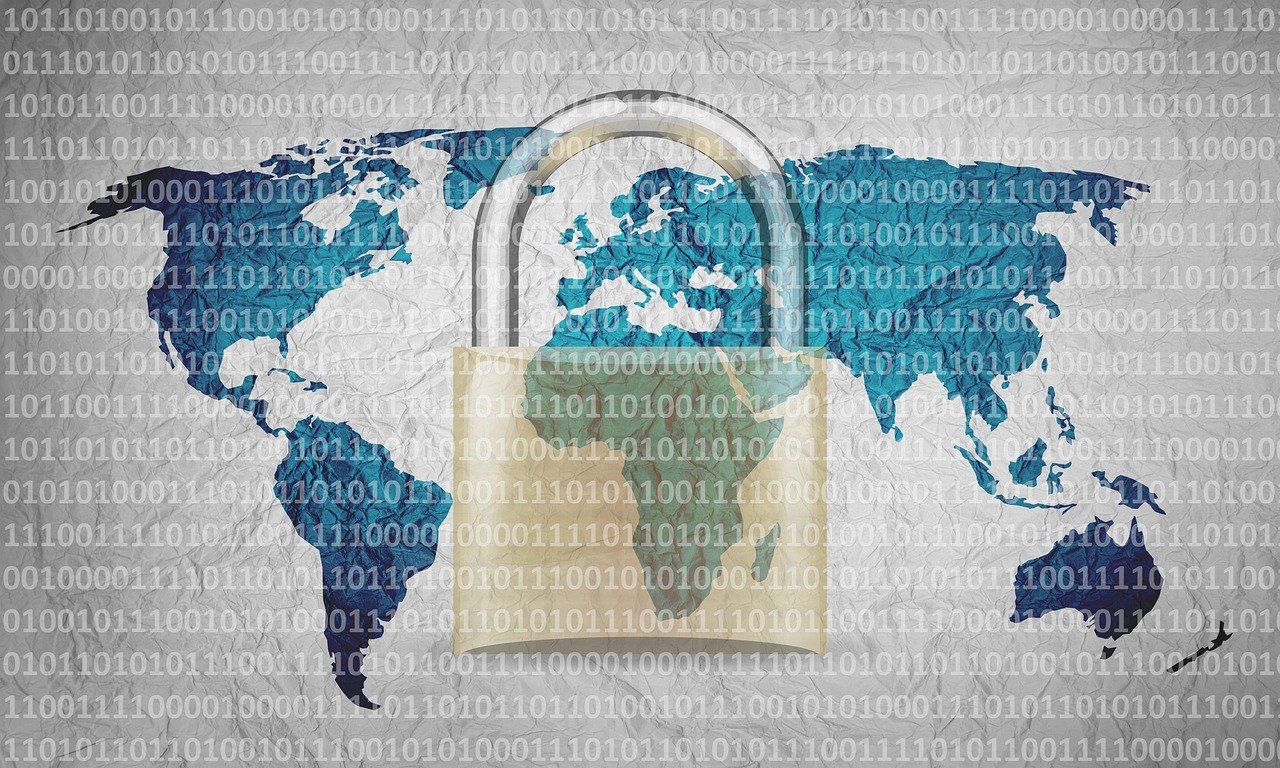Imagine discovering your personal information – your name, address, bank account details, even your social security number – is floating around on the dark web. This isn’t a scene from a spy movie; it’s the grim reality of a data breach, a pervasive threat that looms over individuals and organizations alike. Understanding what data breaches are, how they happen, and what you can do to protect yourself is no longer optional; it’s essential in today’s digital landscape.
What is a Data Breach?
Definition and Scope
A data breach occurs when sensitive, protected, or confidential data is accessed, used, disclosed, copied, modified, or destroyed without authorization. This can be accidental, as in the case of a misconfigured cloud server, or malicious, resulting from a cyberattack or insider threat. The scope of a data breach can range from a single compromised account to the exposure of millions of records, affecting individuals, businesses, and even governments. Data breaches often trigger legal and regulatory consequences, reputational damage, and significant financial losses.
Examples of Data Breached Information
The types of data exposed in a breach can vary widely, but some of the most commonly targeted and damaging categories include:
- Personally Identifiable Information (PII): Names, addresses, dates of birth, social security numbers, driver’s license numbers.
- Financial Information: Credit card numbers, bank account details, transaction history.
- Protected Health Information (PHI): Medical records, health insurance information.
- Intellectual Property: Trade secrets, patents, proprietary software code.
- Credentials: Usernames and passwords.
Statistics on Data Breaches
Data breaches are a growing concern. According to IBM’s 2023 Cost of a Data Breach Report, the global average cost of a data breach reached a record high of $4.45 million. Furthermore, the report found that it takes an average of 277 days to identify and contain a data breach, highlighting the importance of rapid detection and response strategies. The healthcare sector consistently reports the highest average cost per breach due to the sensitive nature of medical data and stringent regulatory requirements.
How Data Breaches Happen
Common Attack Vectors
Understanding the methods used by attackers is crucial for preventing data breaches. Common attack vectors include:
- Phishing: Tricking individuals into revealing sensitive information through deceptive emails, websites, or phone calls. Example: A fake email disguised as a password reset request leading to a compromised account.
- Malware: Infecting systems with malicious software (viruses, worms, Trojans, ransomware) that can steal data, encrypt files, or grant unauthorized access. Example: Ransomware encrypting all files on a company server, demanding a ransom for decryption.
- SQL Injection: Exploiting vulnerabilities in web applications to gain access to databases.
- Cross-Site Scripting (XSS): Injecting malicious scripts into websites to steal user cookies or redirect users to fraudulent sites.
- Brute-Force Attacks: Systematically trying different usernames and passwords until the correct ones are found.
- Insider Threats: Data breaches caused by employees, contractors, or other individuals with authorized access to systems and data.
- Weak Passwords: Using easily guessable passwords that are vulnerable to cracking.
- Misconfigured Cloud Storage: Accidentally leaving cloud storage buckets (like AWS S3 buckets) publicly accessible.
Vulnerabilities and Weaknesses
Attackers often exploit existing vulnerabilities and weaknesses in systems and processes. These can include:
- Outdated software: Unpatched software contains known security flaws that attackers can exploit.
- Lack of proper access controls: Overly permissive access privileges can allow unauthorized individuals to access sensitive data.
- Insufficient security awareness training: Employees who are not aware of security risks are more likely to fall victim to phishing attacks or other social engineering tactics.
- Poor data encryption practices: Data that is not properly encrypted is more vulnerable to theft or disclosure.
- Weak network security: Inadequate firewalls, intrusion detection systems, and other network security measures can make it easier for attackers to penetrate systems.
The Impact of Data Breaches
Financial Costs
Data breaches can result in significant financial losses for organizations, including:
- Investigation and remediation costs: Hiring cybersecurity experts to investigate the breach, contain the damage, and restore systems.
- Legal and regulatory fines: Facing penalties for violating data protection laws and regulations such as GDPR, CCPA, and HIPAA.
- Notification costs: Incurring expenses to notify affected individuals about the breach.
- Credit monitoring services: Providing credit monitoring to affected individuals.
- Lost revenue: Experiencing a decline in sales and customer trust.
- Reputational damage: Suffering long-term damage to brand reputation and customer loyalty.
- Stock price decline: Publicly traded companies may experience a drop in stock value following a data breach.
Reputational Damage
A data breach can severely damage an organization’s reputation, leading to:
- Loss of customer trust and loyalty.
- Negative media coverage and social media backlash.
- Difficulty attracting and retaining employees.
- Increased scrutiny from regulators and industry watchdogs.
Legal and Regulatory Consequences
Data breaches can trigger legal and regulatory consequences, including:
- Lawsuits from affected individuals and organizations.
- Investigations and enforcement actions by regulatory agencies.
- Fines and penalties for violating data protection laws.
- Mandatory reporting requirements.
- Increased compliance burdens.
How to Protect Yourself and Your Organization
Best Practices for Individuals
- Use strong, unique passwords: Avoid using easily guessable passwords and never reuse passwords across multiple accounts. Consider using a password manager to generate and store strong passwords.
- Enable multi-factor authentication (MFA): Add an extra layer of security to your accounts by requiring a second factor of authentication, such as a code sent to your phone or generated by an authenticator app.
- Be wary of phishing emails and scams: Carefully examine emails and messages for suspicious links, attachments, or requests for personal information. Verify the sender’s identity before clicking on any links or providing any information.
- Keep your software up to date: Install security updates and patches as soon as they become available.
- Use a reputable antivirus and anti-malware program: Regularly scan your devices for malware.
- Monitor your credit reports: Check your credit reports regularly for any signs of identity theft or fraudulent activity. You can get free credit reports from each of the major credit bureaus (Equifax, Experian, and TransUnion) once a year.
- Secure your home network: Use a strong password for your Wi-Fi network and enable encryption (WPA2 or WPA3). Consider enabling your router’s firewall.
- Be mindful of what you share online: Limit the amount of personal information you share on social media and other online platforms.
Best Practices for Organizations
- Implement a strong security program: Develop and implement a comprehensive security program that includes policies, procedures, and controls to protect sensitive data.
- Conduct regular risk assessments: Identify and assess potential security risks and vulnerabilities.
- Implement robust access controls: Restrict access to sensitive data to only those individuals who need it.
- Encrypt sensitive data: Encrypt data both in transit and at rest.
- Train employees on security awareness: Provide regular security awareness training to employees to educate them about phishing, malware, and other security threats.
- Implement a data loss prevention (DLP) solution: Use DLP tools to monitor and prevent sensitive data from leaving the organization’s control.
- Monitor your network and systems for suspicious activity: Implement intrusion detection systems and security information and event management (SIEM) tools to detect and respond to security incidents.
- Develop an incident response plan: Create a detailed plan for responding to data breaches, including procedures for containment, eradication, recovery, and notification.
- Regularly back up your data: Create regular backups of your data and store them in a secure location.
- Consider cybersecurity insurance: Cybersecurity insurance can help cover the costs associated with a data breach, such as investigation, remediation, legal fees, and notification expenses.
- Stay compliant with relevant regulations: Ensure your organization complies with all applicable data protection laws and regulations, such as GDPR, CCPA, and HIPAA.
- Regularly test your security defenses: Conduct penetration testing and vulnerability assessments to identify weaknesses in your security defenses.
- Adopt a zero-trust security model: Implement a zero-trust security model, which assumes that no user or device should be trusted by default, and requires verification for every access request.
Conclusion
Data breaches are a serious and growing threat that can have devastating consequences for individuals and organizations. By understanding the risks, implementing strong security measures, and staying informed about the latest threats, you can significantly reduce your risk of becoming a victim. Proactive security measures are not merely preventative; they are essential for maintaining trust, protecting reputation, and ensuring the long-term viability of individuals and organizations in an increasingly interconnected world. Staying vigilant and continually improving your security posture is the key to mitigating the ever-evolving threat of data breaches.



